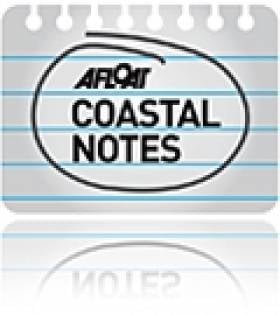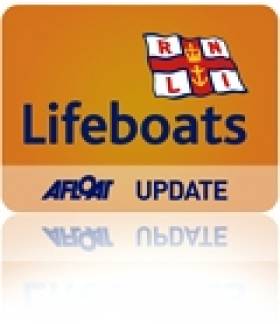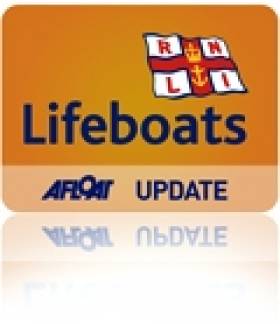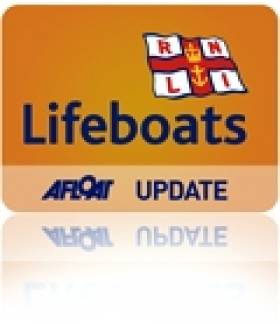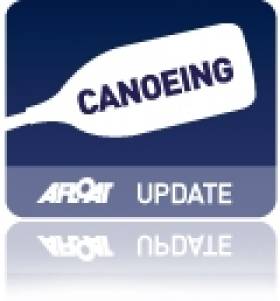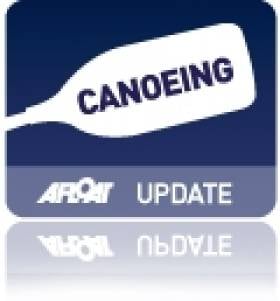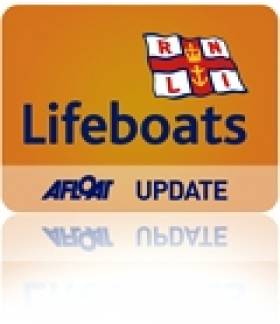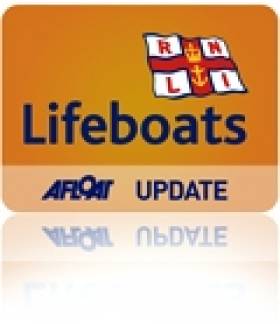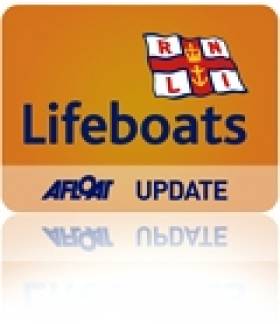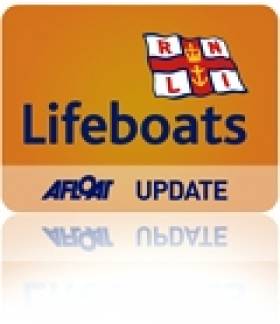Displaying items by tag: Wicklow
Wicklow Aerial Video Captures Garden Coastline & Stunning Sea Views
#wicklow – No surprise that this County Wicklow from the air vid features the Garden County's stunning coastline but Skycam Ireland's crisp footage via drone goes so much further to capture incredible coastal scenery right on the Capital's doorstep.
There is spectacular views of rolling green hills and a weather-beaten rocky coastline. There's castles and towers stationed on every headland, giving you the feeling of flying through a scene from 'Lord of the Rings'.
Nearby Dublin Bay sailors will instantly recognise familiar landmarks including Wicklow Head, its prominent lighthouses and Wicklow harbour itself, the home of the Round Ireland yacht race. The four–minute video includes coastal scenes of Killiney Bay and Bray Head and shots over water along an historically important stretch of Kilcoole beach.
There are many more water-based shots featured too including Wickow's amazing lakes, waterfalls and watch out for the cute seal!
We hope Skycam are planning a 2015 verison, if so Afloat.ie recommends a flight over Greystones Harbour and Marina to capture the country's newest coastal marina facility.
Wicklow RNLI Holds Annual New Year’s Day Service Of Remembrance
#RNLI - A week after Dun Laoghaire RNLI remembered those who lost their lives at sea, Wicklow RNLI held its annual New Year's Day service of remembrance this past Thursday.
The ceremony began with a short religious prayer conducted by Fr Donal Roche and Rev Ken Rue, who blessed the flowers and wreaths.
After the blessing, coxswain Nick Keogh and the lifeboat crew took the floral tributes out to sea and launched them on the water.
The annual ceremony remembers past RNLI volunteers and all associated with the sea from Wicklow.
Letters Of Commendation For Wicklow Lifeboat Crew In Summer Rescue
#RNLI - Alan Goucher and Graham Fitzgerald, volunteer crew at Wicklow Lifeboat Station, have received letters of commendation from George Rawlinson, operations director of the RNLI, for their quick actions in a rescue over the summer.
As previously reported on Afloat.ie, on 2 July both Wicklow lifeboats were launched at 3.20pm and proceeded south to Silver Strand to a report of a woman in difficultly in the water at the beach, one mile south of Wicklow Head.
The Wicklow inshore lifeboat crew found it difficult to locate the casualty and following a search, with help from a member of the public on the shore, the lifeboat crew found the woman at the rear of a cave close to the beach.
Goucher entered the water and swam into the cave to assist the woman. He placed her in a lifejacket before assisting her from the cave to the waiting inshore lifeboat and the crew started to administer first aid, as she was showing signs of hypothermia.
They then transferred the casualty to the all-weather lifeboat a short distance away, which returned to the shore and was met by an ambulance.
In his letter to Goucher, Rawlinson wrote: "Your willingness to swim into the cave and use of your local knowledge to extricate the casualty safely ensured a good outcome on this rescue. I commend your commitment and professionalism.
" The inshore lifeboat returned to the area and the volunteer crew was informed that two people who had earlier tried to assist the first casualty had injured themselves on rocks while trying to return to the beach. They also requested the all-weather lifeboat to return to the scene and the lifeboat crew began to administer first aid.
They were joined on scene by the Dublin Coast Guard helicopter, and the two people were winched on-board and taken to hospital.
In his letter to helm Fitzgerald, Rawlinson said: "During the rescue, you demonstrated calm and sound command of the incident, quickly gaining the required information and assessing the risks involved in committing your crew member to enter the water."
While returning to the inshore lifeboat, a crew member was made aware of a further person who needed assistance after they became unwell following their attempt to go to also go to the aid of the first casualty.
Due to the lack of access for an ambulance, the coxswain requested the casualty be transferred by lifeboat and was taken ashore and met by ambulance.
In the letter of commendation to the station volunteers and crew, Rawlinson concluded: "I would like to thank everyone concerned for their teamwork, high level of competence and adaptability. Their management, assessment and diligence ensured all the casualties were recovered quickly and safely."
Wicklow Lifeboat Assists Fishing Vessel
#RNLI - Wicklow RNLI's all-weather lifeboat launched yesterday morning (Sunday 23 November) to assist a fishing vessel with mechanical problems seven miles north of Wicklow Harbour.
The lifeboat, under the command of second coxswain Ciaran Doyle, located the 10-metre vessel with three fishermen on board shortly after 10am near the Breaches Buoy.
Weather conditions in the area were slight sea with westerly wind force two.
A towline was established and the fishing boat was taken in tow back to Wicklow. The lifeboat arrived back in the harbour at 11.20am and secured the fishing vessel with three crew safely alongside the south quay.
The crew on this callout were Doyle, mechanic Brendan Copeland, Carol Flahive, Kevin Rahill, John Vize, Alan Goucher and Peter McCann.
Elsewhere over weekend, the volunteer crew of Bundoran RNLI lifeboat were launched on Saturday evening (22 November) to reports of a surfer in difficulty at the town's Main Beach.
As darkness was beginning to fall, the crew were paged at 4.06pm by Malin Head Coast Guard and launched within minutes in rough conditions, making their way to beach. But on approach they were advised that the surfer had made his way ashore and were stood down.
Speaking on their return to the station, volunteer crewman Brian Faulkner said: "We are thankful that this is another callout that had a happy ending.
"As we head into the winter, the sea is getting rougher and evenings are getting shorter – conditions can change at a moments notice and we would always urge water users to be mindful of this."
Deceased Named In Wicklow Kayaking Tragedy
#Kayaking - The Irish Mirror reports on tributes pouring in for the kayaker who died on the River Inchavore in Wicklow last Thursday evening (13 November).
Twenty-one-year-old Shane Murphy from Baldoyle in North Dublin was an experienced kayaker, whose death has "affected the community badly", said neighbour Darragh McGhee.
As previously reported on Afloat.ie, the young man died after he was swept away while kayaking with a group on the river near Lough Dan in the Wicklow Mountains.
The heavy rainfall on the day, which quickly swelled the river's waters, is believed to have contributed to the tragedy.
Kayaker Dies On Swollen Wicklow River
#Kayaking - The Irish Times reports that a man has died after being swept away while kayaking on the River Inchavore near Lough Dan in Co Wicklow.
The man, who has yet been unnamed, was out on the popular kayaking stretch yesterday (13 November) with around six others during heavy rain that quickly swelled the river's waters.
Two other kayakers were airlifted with the casualty to Tallaght Hospital but they are not believed to be injured.
Wicklow Lifeboat Launches To Fishing Vessel With Engine Failure
#RNLI - Wicklow RNLI's inshore lifeboat launched at 11.25am yesterday morning (Thursday 16 October) to assist a small fishing boat with engine failure.
Speaking after the callout, lifeboat helm Graham Fitzgerald said: "We located the boat with two occupants drifting about one mile north of Wicklow Harbour.
"The fishermen were experiencing mechanical problems with the outboard engine. So we rigged a tow line and brought the vessel back to the harbour."
The crew on the callout were Fitzgerald, Alan Goucher and John Vize.
Wicklow Lifeboat Rescues Swimmer Off Brides Head
#RNLI - Wicklow RNLI rescued a male swimmer who got into difficulty yesterday afternoon (Thursday 4 September).
The rescue followed a request from the Irish Coast Guard for the volunteer lifeboat crew to search for a missing swimmer at Silver Strand beach.
The alarm was raised by the swimmer’s wife who was concerned for his safety and by members of the public who heard his call for help.
The all-weather lifeboat had already launched at 2.30pm and was on her way to meet and escort a former visiting lifeboat into the harbour when it was requested.
The lifeboat diverted immediately and proceeded south towards Wicklow Head to begin a search. The inshore lifeboat also launched to assist. Weather conditions and visibility in the area were good at the time.
During the search, a person was spotted in the water about one mile offshore near Brides head.
The all-weather lifeboat, under the command of second coxswain Ciaran Doyle, was quickly alongside the casualty. Crewmember Matt Doyle took him from the water using a scramble net.
First aid was administered to the exhausted man by Carol Flahive as the lifeboat made its way back to Wicklow Harbour.
The lifeboat was met on arrival at the East Pier by a waiting ambulance, where the swimmer was treated by paramedics. He did not need to be hospitalised.
It was quickly established that the man had been swimming off Silver Strand when he was carried quite a distance north with the tide and strong currents, which prevented him getting ashore.
At Wicklow Head, he was swept further out to sea. That's when members of the public on the cliff contacted the coastguard after hearing his call for help.
Speaking after the callout, Wicklow RNLI lifeboat operations manager Des Davitt said: "The swimmer was extremely lucky today to be spotted so quickly by the crew and thankfully a tragic outcome was avoided."
#RNLI - Rosslare RNLI was called out twice yesterday afternoon (Friday 22 August) to help two separate boats with ropes wrapped around their propellers.
In the space of two hours, both boats – a RIB with two people on board off Carna Pier and a motor cruiser with two on board near Waterford Harbour – were freed by the volunteer lifeboat crew.
The double callout also came on the last day for retiring lifeboat operations manager Michael Doyle.
"Two callouts in one afternoon is a fitting way to say goodbye," said Rosslare RNLI volunteer lifeboat press officer Jamie Ryan.
"Thankfully both call outs were to vessels that had their propellers fouled and no lives were in danger. The lifeboat is there to help anyone in trouble at sea and we were happy to provide assistance in these two cases."
Elsewhere on the east coast, Wicklow RNLI's all-weather lifeboat launched at 4am yesterday morning to the aid a yacht in difficulty eight miles north of Wicklow Harbour.
The yacht was on passage to Greystones when the propeller became fouled in ropes and was unable to make any headway.
"We located the yacht with four people one mile south-east of Greystones Harbour," said coxswain Nick Keogh. "Two lifeboat crew were transferred onto the yacht to assess the situation and they managed to clear the rope obstructing the propeller.
"With the propeller free the yacht was able to make her way into Greystones under its own power."
Wicklow RNLI Lifeboat Launches to Assist Sinking Motor Boat
#rnli – Both Wicklow RNLI lifeboats launched at 1.40pm (Saturday 26 July) this afternoon after a small boat with four occupants sank eight miles north east of Wicklow harbour.
The 17ft motor boat with two adults and two young children began to take water when the skipper managed to radio a distress call before the boat sank. The family spent a short time in the water before a nearby fishing vessel picked them up. The trawler was asked to proceed back towards Wicklow to meet the lifeboat.
The inshore lifeboat was alongside the fishing vessel twenty minutes after launching. Two lifeboat crew were put on board the fishing vessel to access the casualties, who were then transferred to the all weather lifeboat, as they were showing signs of hypothermia and shock. An ambulance was requested to meet the lifeboat on arrival.
The lifeboat landed two adults and two young children at the South Quay after 2-30pm, where they were met by an ambulance crew. They were checked out and later released unharmed by their ordeal.
Speaking after the callout LOM Des Davitt said 'The boat sank very quickly and the four people were adrift in the water. If it was not for the swift action by the crew of the fishing vessel, this might have had a more serious outcome.'


























